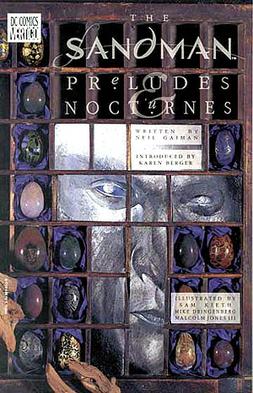
Preludes & Nocturnes is the first trade paperback collection of the comic book series The Sandman, published by the DC Comics imprint Vertigo. It collects issues #1–8. It is written by Neil Gaiman, illustrated by Sam Kieth, Mike Dringenberg and Malcolm Jones III, colored by Robbie Busch and lettered by Todd Klein.
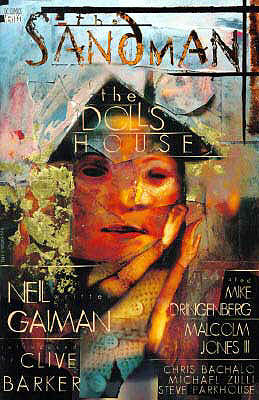
The Doll's House is the second trade paperback of the DC comic series The Sandman. It collects issues #9–16. It was written by Neil Gaiman, illustrated by Mike Dringenberg, Malcolm Jones III, Chris Bachalo, Michael Zulli and Steve Parkhouse, coloured by Robbie Busch and lettered by Todd Klein.

Season of Mists is a 1990–1991 American eight-part comic and the fourth collection of issues in the DC Comics' The Sandman series. It collects issues #21–28. It was written by Neil Gaiman; illustrated by Kelley Jones, Mike Dringenberg, Malcolm Jones III, Matt Wagner, Dick Giordano, George Pratt, and P. Craig Russell; coloured by Steve Oliff and Daniel Vozzo; and lettered by Todd Klein.

Fables & Reflections (1993) is an American fantasy comic book, the sixth collection of issues in the DC Comics series The Sandman. It was written by Neil Gaiman and illustrated by Bryan Talbot, Stan Woch, P. Craig Russell, Shawn McManus, John Watkiss, Jill Thompson, Duncan Eagleson, Kent Williams, Mark Buckingham, Vince Locke and Dick Giordano, coloured by Daniel Vozzo and Lovern Kindzierski/Digital Chameleon, and lettered by Todd Klein. The introduction is written by Gene Wolfe.

Brief Lives (1994) is the seventh collection of issues in the DC Comics series, The Sandman. Written by Neil Gaiman, penciled by Jill Thompson, inked by Vince Locke and Dick Giordano, coloured by Daniel Vozzo, lettered by Todd Klein, with cover art by Dave McKean. The introduction was written by Peter Straub but was published as an afterword; Gaiman wrote a brief introduction explaining this.

The Wake is the tenth and final collection of issues in the American comic book series The Sandman. It is written by Neil Gaiman, illustrated by Michael Zulli, Jon J. Muth and Charles Vess, colored by Daniel Vozzo and Jon J. Muth, and lettered by Todd Klein.

The Sandman is a comic book written by Neil Gaiman and published by DC Comics. Its artists include Sam Kieth, Mike Dringenberg, Jill Thompson, Shawn McManus, Marc Hempel, Bryan Talbot, and Michael Zulli, with lettering by Todd Klein and covers by Dave McKean. The original series ran for 75 issues from January 1989 to March 1996. Beginning with issue No. 47, it was placed under DC's Vertigo imprint, and following Vertigo's retirement in 2020, reprints have been published under DC's Black Label imprint.
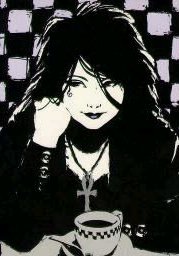
Death of the Endless is a fictional personification of death who appears in American comic books published by DC Comics. She first appeared in The Sandman vol. 2, #8 and was created by Neil Gaiman and Mike Dringenberg.

Dream of the Endless is a fictional anthropomorphic personification who first appeared in the first issue of The Sandman, written by Neil Gaiman and published by DC Comics. One of the seven Endless, who are inconceivably powerful beings older and greater than gods, Dream is both lord and personification of all dreams and stories, and all that is not in reality. He has taken many names, including Morpheus, Oneiros, Kai'ckul, and the Sandman, and his appearance can change depending on the person who is seeing him. Dream was named the sixth-greatest comic book character by Empire. He was also named fifteenth in IGN's 100 Top Comic Book Heroes list.

Death: The High Cost of Living is a comic written by Neil Gaiman with art by Chris Bachalo and Mark Buckingham. It is a spin-off from Gaiman's best-selling Vertigo Comics series The Sandman, featuring the Sandman (Dream)'s elder sister, Death of the Endless. Its premise is that Death takes human form once a century, to remain grounded and in touch with humanity, an idea touched upon in several other media, for example in the 1934 film Death Takes a Holiday and in the Terry Pratchett novel Reaper Man.

Cain and Abel are a pair of characters from DC Comics based on the biblical Cain and Abel. They are key figures in DC's "Mystery" line of the late 1960s and 1970s, which became the mature-readers imprint Vertigo in 1993.

Death: At Death's Door is a comic penned and inked in manga-style, by Jill Thompson, author of the Little Endless. It seems to take a more child-friendly and humorous approach, through the eyes of one of the more popular of the Endless characters, Death, to the storyline Season of Mists.

The Sandman: Endless Nights is a graphic novel written by Neil Gaiman as a follow-up to his Sandman series. The book is divided into seven chapters, each devoted to one of the Endless, a family of siblings who are physical manifestations of the metaphysical concepts Dream, Death, Desire, Destruction, Delirium, Despair and Destiny. It was published by DC Comics in 2003. It won the Bram Stoker Award for Best Illustrated Narrative. It is also the first comic book to ever be on the New York Times Bestseller List.

Mike Dringenberg is an American comics artist best known for his work on DC Comics/Vertigo's Sandman series with writer Neil Gaiman.

The Dreaming was a monthly comic series that ran for 60 issues and was revived in 2018. It is set in the same dimension of the DC universe as The Sandman and the stories occurred primarily within Dream's realm, The Dreaming, concentrating on characters who had played minor roles in The Sandman, including The Corinthian, Matthew the raven, Cain and Abel, Lucien the dream librarian, the faerie Nuala, Eve, and Mervyn Pumpkinhead. It also introduced a number of new characters, Echo and a new (white) dream raven, Tethys. After those characters were retconned the 2018 version of The Dreaming introduced new characters such as Hyperion Keeter, WAN, and the night hag, Dora. The 2020 spin-off / continuation, The Dreaming: Waking Hours introduced other new characters such as Linsy, Ruin, and most notably, Heather After, a direct descendant of Roderick Burgess. There were brief appearances by The Endless during the series, including cameos by Dream, Death, Destiny, and Desire.

The Little Endless Storybook is a picture book by Jill Thompson published by the Vertigo imprint of DC Comics. It features the popular Endless characters from Neil Gaiman's The Sandman comic book reimagined as toddlers. A second Little Endless Storybook, titled Delirium's Party, was released in 2011.
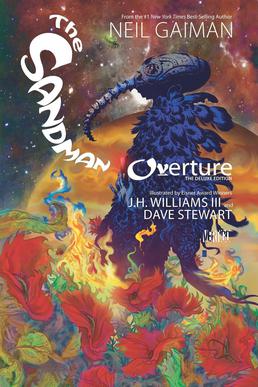
The Sandman: Overture is a six issue comic book miniseries written by Neil Gaiman with art by J.H. Williams III. It is a prequel to Gaiman's The Sandman series, and debuted in 2013, about 17 years after the end of the regular comic. It was originally published as six issues with two-month intervals in between. A deluxe edition combining all six issues was published in November 2015.
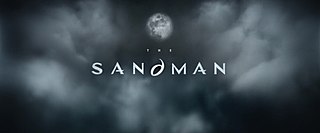
The Sandman is an American fantasy drama television series based on the 1989–1996 comic book written by Neil Gaiman and published by DC Comics. The series was developed by Gaiman, David S. Goyer, and Allan Heinberg for the streaming service Netflix and is produced by DC Entertainment and Warner Bros. Television. Like the comic, The Sandman tells the story of Dream / Morpheus, the titular Sandman. The series stars Tom Sturridge as the title character, with Boyd Holbrook, Vivienne Acheampong, and Patton Oswalt in supporting roles.


















